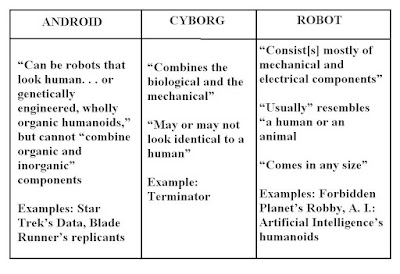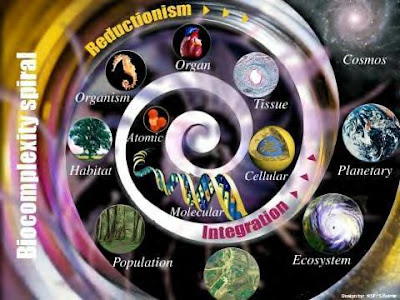If the foreground is the text, more or less clearly expressed, albeit, usually, in metaphor, the background is the subtext. The background is the whisper that provides the context by which the spoken (foreground) is to be interpreted, and, in artwork related to the horror genre, the background often hints at night and darkness, at the distance of stars, at clouds and fog, at alien worlds, at disorientation, at devastation, at decomposition and putrefaction, at fragmentation, at mystification, at torture, at suffering, at passion, at destruction, and at hostility.
According to Trevor Whittock, George Lakoff and Mark Johnson argue, in Metaphors We Live By, “against the view that experiences and objects have inherent properties and are understood solely in terms of those properties. . . [that] inherent properties only in part account for how we comprehend things. Just as important is [the fact that] our concepts, and consequently our experience, are structured in terms of metaphors” (Metaphor and Film, 114-115). By comparing the new and unfamiliar with the known, people seek to understand better that which is strange or novel. Often, the creation of metaphors and analogies are means of doing so.
I assert that something similar to this process can occur in the contemplation of a drawing or a painting. The foreground is the overt (known), the background the covert (unknown), half of a complete statement, or vision, that, to be understood must be considered in light of its complementary counterpart. Some of the clearest, or more obvious, examples of the background’s importance to interpreting a work of art’s foreground are seen in the work of fantasy artist Frank Frazetta, whose paintings often adorn science fiction and fantasy paperback novels, but which also frequently exhibit horrific imagery.

In one such painting, a warrior dressed vaguely in the manner of a Viking rushes toward a nubile, nude young maiden who is about to be sacrificed upon a stone altar by a cloaked figure holding a large knife. An alligator, but with wavering tentacles attached to its reptilian tail, lies at the base of the short flight of stone steps that leads to the altar. The background is peopled, as it were, with dark shapes comprised of huge bat-like wings, fanged human faces, lupine ears, and brawny arms, one or more (it is difficult to tell, for the background is dark, and the figures which occupy it are little more than shadows) seize the pale, white corpse of another nude woman who, it appears, was the victim of an earlier sacrifice. Above the heroic warrior, parallel bands of shadow descend, as if they are the dark outlines of a monstrous hand reaching for the would-be rescuer. The background suggests a hellish or demonic cult and, perhaps, the evil god whom the cultists worship and who are about to sacrifice the female victim, thereby offering a key to interpreting the overall image, or scene, that the painting, as a whole, depicts.

In another of Frazetta’s paintings, Queen Kong, a gigantic blonde stands astride the Empire State Building, New York City stretched out below her, circled by attacking biplanes. In her right hand, she holds a miniature version of King Kong. The sky is blue-gray, shot through with wisps of red-orange clouds that resemble used bandages. Obviously, the painting is a spoof upon King Kong, with the roles of the ape and the human object of his simian affections reversed; the background (the city streets below the skyscraper, in particular) helps to establish the context that makes this humorous work intelligible.

A final example should suffice to clarify my point that a painting’s background is--or can be (and probably should be)--an important contextual clue to the interpretation of its foreground. In this picture, Barbarian, a warrior stands atop a heap of rubble, a nude woman lying at his feet. The palm of his left hand rests upon the hilt of his sword, the blade of which thrusts into the pile of debris. A closer look at the rubble reveals it to be not only a heap of earth, but one which is strewn with skulls, spines, severed arms, a battleaxe, and what might be a spear. Symbolically, the warrior stands upon the bones and corpses of enemies whom he has bested in battle, an interpretation which seems to be borne out by the delicate images of a huge skull and a cowl-shrouded death’s-head which are close to the same colors--tan, light brown, yellow, and orange--out of which they appear to swirl, perhaps as representations of the warrior’s memories of the evil forces whom he has, in past battles, slain. The yellow and orange colors rise, seeming to flicker, as if they are flames, perhaps suggesting the final fate of the vanquished, whom the victorious hero has dispatched to hell.
Writers can accomplish the same effects as Frazetta and other visual artists by writing descriptions of settings in which details comprise a contextual background which illuminates, on a more or less subliminal level, the significance of a scene’s “foreground” action or characters, thereby enriching their own work. By describing settings in such a way that the descriptions themselves tell a story, the writer can tell stories within stories, the former providing emotional, thematic, or narrative subtext for the latter.









